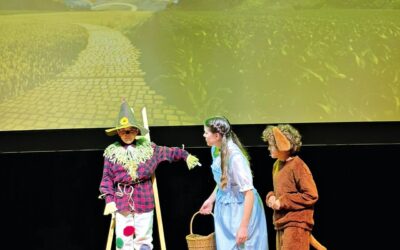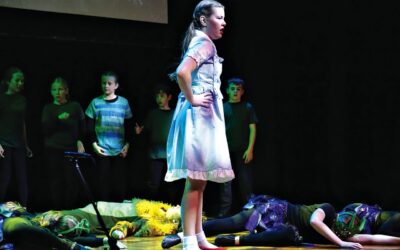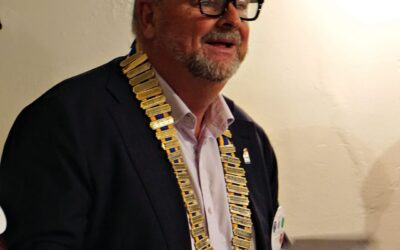Former Gunnedah schoolboy Jordy Ford and his father Gary Ford recently returned from an emotional trip of a lifetime, across Sabah, in the north of Borneo, from Sandakan to Ranau, following the path of WWII prisoners of war who were taken on a ‘death march’ through the jungle by their Japanese captors.
The trek’s tour guide was Lynette Silver, a highly recognised military author and investigative journalist who painstakingly uncovered the majority of information that had been largely covered up to hide failed rescue missions by incompetent military leaders.
“The whole story of the Sandakan POWs is equally fascinating, devastating and inspirational because of the horrendous treatment and conditions the soldiers were forced to endure,” Jordy said.
“Of the roughly 2500 prisoners – including a Gunnedah man – the only six to survive were all escapees; the rest died from lack of food and disease or were murdered at the hands of the ruthless Japanese guards.
“Unfortunately, this story is not as well known to the general public as it should be.”
The trek followed in the direct footsteps of the men who marched the track in horrific conditions to their death.
“The track was extremely hard in some places with long steep inclines up mountains or through slippery mud-covered trails,” Jordy said.
“Tree roots and vines were always a trip hazard and adding in the nearly 100 per cent humidity most days and torrential summer rains that rolled in during the afternoon, it made for an extremely challenging journey.”
Added to the challenge were river crossings where they had to either wade through the water or walk over suspension bridges.
“Knowing that we were walking in the footsteps of the men who endured this suffering from disease, starvation and brutal beatings along the way gave us plenty of motivation to keep going,” Jordy said.
“There were so many stories of unbelievable courage and bravery sometimes in the face of certain death, many times to save others – the story of Private Ritchie Murray is a great one.”
Those taking up the challenge were each given a soldier to follow throughout the trek and when they came to the spot where that person died, they had to present a little history of their life and experience of the war.
“This was a very humbling experience, seeing the spot where they could not go any further and either died of their conditions or were shot by the Japanese guard,” Jordy said.
“I couldn’t help but think about what these young men were thinking of in that moment so far away from home or family in the jungle of a foreign country.
“They were all just average blokes, similar interests and hobbies as any other person today, they had families and lived normal lives. Many of them were around my age or younger, and it was very humbling to hear their stories.”
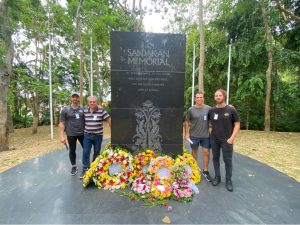
Jordy and fellow trekkers at the Sandakan Memorial.
Jordy said it was really hard to fathom how these brave men managed to keep going with no food, clothes and a lot of times terrible disease like dysentery, berri berri or malaria and carrying heavy loads of rice or supplies for the Japanese.
“The brutality of the Japanese guards was hard to comprehend – how another human could put someone through this kind of treatment,” he said.
“There was also some incredibly beautiful scenery in the jungle, pristine rainforest with wild orchids and pitcher plants growing everywhere and plenty of wildlife including orangutans, monkeys and some giant centipedes.
“Seeing locals living in remote villages was a great experience. The people had so little but were always happy and smiling and seemed to love seeing us come through. They were all so generous and would sometimes give us fruit for free and refuse to take our money even though they were very poor.”
Jordy said having Lynette Silver and her husband Neill there to describe the events that took place in detail was an amazing opportunity in itself.
“Their passion for the story and the hard work they have put in to uncover it is inspirational,” he said.
“I could only imagine how much it would mean to the people who lost their lives that their story is being told.”
Sandakan Memorial Park, adjacent to the site of the original POW camp, commemorates the deaths between January and August 1945 of approximately 2400 Australians and British prisoners of war, with more than 1000 surviving sick and weak POWs forced on to three brutal and arduous long marches.
Many of the POWs had been captured at the surrender at Singapore in February 1942 and used as the labour force to build a military airstrip. In late 1944 as the Allied forces advanced in the Pacific, the airstrip was bombed and destroyed which forced the enemy to move the POWs 260km west to Ranau. Approximately 500 died on the marches and the rest died in camps at Ranau and Sandakan.
Day 10 of the trek included a visit to the Starcevich Memorial where Australian soldier Leslie ‘Tom’ Starcevich earned a Victoria Cross during the liberation of Sabah.
Jordy said seeing the war memorials was an extremely moving experience as so many graves were marked with “A Soldier Known Unto God”.
“Some had been identified through the hard work of Lynette and helpers in finding remains and connecting the dots through scarce information to identify the soldier and put their name to a headstone,” Jordy said.
“It was pretty emotional just being there at Labuan, you could feel the tension in the air, so much pain and suffering and so many young Australians who had died so far away from home.
“I also appreciated that such a beautiful memorial is maintained to a standard that the soldiers deserve.”
Seeing the heritage listed St Michael’s Church in Sandakan where the soldiers spent their last night before becoming POWs was an incredible experience for Jordy and Gary.
“You could feel the significance of the place and it really was special,” Jordy said.
“Some of the original pews were still in the building that no doubt some of the Aussie soldiers slept on during that night.
“The stained-glass windows were something that needs to be seen to be believed. They are more remarkable than any picture could do justice. It is an incredible story and that they are dedicated to the Aussie soldiers and those who helped them is pretty amazing.”
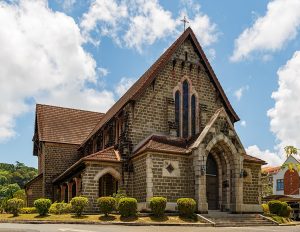
Seeing the heritage listed St Michael and All Angels Church in Sandakan where the soldiers spent their last night before becoming POWs was an incredible experience for Jordy and Gary.
Stage 1 of a private project, to make and install stained glass windows in the historic church of St Michael and All Angels in Sandakan, Borneo (Sabah) was completed in April 2005. Erected as a memorial to the POWs, the world class, heritage windows are also a thanksgiving to the local people who risked and sometimes gave their lives to help them.
There is a Gunnedah connection to the stained glass window artist, Philip Handel, who designed and created the stained glass windows in St Andrew’s Presbyterian Church when he was an apprentice and then went on to become very famous and in demand.
The trek was interspersed with overnight hotel accommodation and side trips to different memorials and points of interest, including the Private Allan Quailey memorial erected where he fell and was killed by the Japanese.
After the war, the bodies of those who had died were recovered and buried at Labaun War Cemetery where his remains were later identified and the headstone replaced with his name and inscription.
The six POWs who escaped and survived to tell the horrific story of the atrocities that occurred were Richard Braithwaite, William Moxham, Owen Campbell, Nelson Short, William Sticpewich and Keith Botterill.
The Sandakan Memorial Park is located next to the site of the original POW Camp and is maintained by the Office of the Australian War Graves.
“At the end of the trip I was very proud to be an Australian and felt lucky to be able to go back home to family, friends and a good life, but definitely had a new appreciation of not taking it for granted because everything we have now has come at a cost,” Jordy said.
To order photos from this page click here

